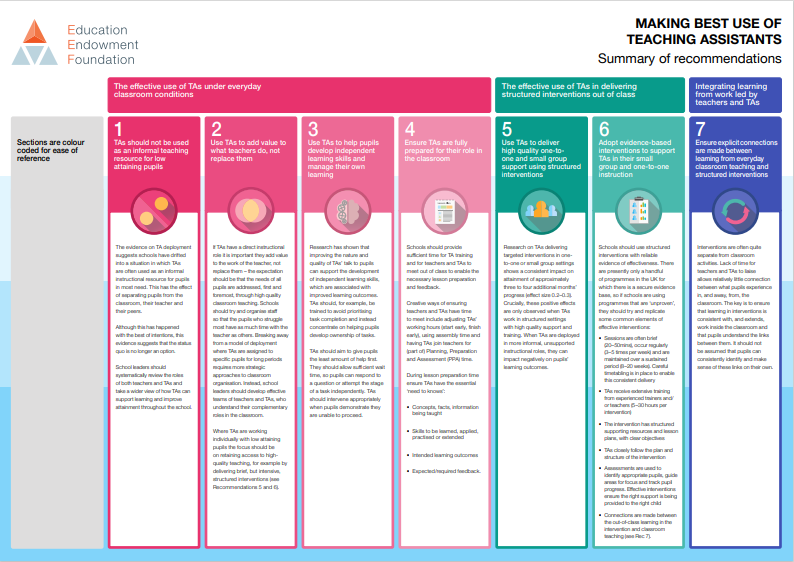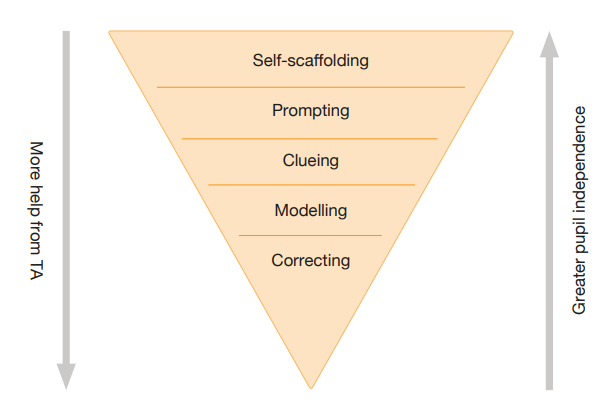Making Best Use of Teaching Assistants

The number of full-time equivalent TAs more than trebled in the period from 2000 to 2018, when the second edition of Making Best Use of Teaching Assistants was published. By that point Teaching Assistants comprised over a quarter of the workforce in mainstream schools in England: 35% of the primary workforce, and 14% of the secondary school workforce.
Schools in 2018 were spending approximately £4.4 billion each year on TAs, corresponding to 13% of the education budget. This situation has not significantly changed since then – and neither have the research headlines about what constitutes effective practice, meaning that this Guidance Report is still both relevant and valuable. The additional resources and tools which support schools in implementing the recommendations have also been updated more recently.
The existence of such a large staff resource presents an excellent opportunity for improvements in practice and outcomes for pupils, without increasing expenditure when budgets are increasingly tight.
So what does the Report recommend?

The effective use of TAs under everyday classroom conditions:
- TAs should not be used as an informal teaching resource for low attaining pupils
- Use TAs to help pupils develop independent learning skills and manage their own learning
- Use TAs to add value to what teachers do, not replace them
- Ensure TAs are fully prepared for their role in the classroom
The effective use of TAs in delivering structured interventions out of class:
- Use TAs to deliver high quality one-toone and small group support using structured intervention
- Adopt evidence-based interventions to support TAs in their small group and one-to-one instruction
Integrating learning from work led by teachers and TAs:
- Ensure explicit connections are made between learning from everyday classroom teaching and structured intervention
As usual with the EEF, the full Guidance Report expands, in practical ways, on each of these and the website also provides a number of linked implementation tools and resources. We will now explore just three examples, linked to recommendations 2 and 3 and to recommendations 5, 6 and 7.
First is the Scaffolding framework for teaching assistant-pupil interactions which helps TAs recognise their role and develop their skills in scaffolding pupils’ learning and encouraging independent thinking.

The second provides examples of effective feedback to improve learning and self-regulation. 
The Interventions Health Check supports recommendations 5, 6 and 7 and enables schools to reflect in a structured way on how the current delivery of TA-led interventions aligns with the research.

Both the Guidance Report and the support tools are well worth exploring. They can all be accessed at the link below:
https://educationendowmentfoundation.org.uk/education-evidence/guidance-reports/teaching-assistants
To read our other Spotlight on Evidence posts, click here.
To sign up to receive new Spotlight on Evidence posts directly to your inbox, click here.
You can download this article below.
